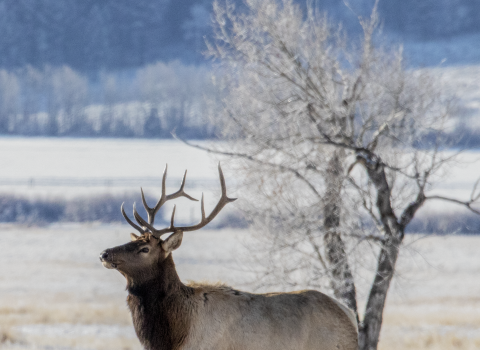A small toad found only in the remote Nevada valley for which it is named seems to have achieved what many of us only dream of, spending our days lounging in the warm water of a natural hot spring.
The sole population of Dixie Valley toad lives in a hot spring-fed wetland in the Dixie Valley, northwest of Fallon, Nevada.
Scientists have known for about 15 years that Dixie Valley toads are associated with thermal springs. But it wasn’t until recently that they learned that the toads actually choose to be in the warmer water.
“In a U.S. Geological Survey-funded study, they found that the toads prefer the warm water, particularly during the winter,” said Chad Mellison, a fish and wildlife biologist with the U.S. Fish and Wildlife Service in Reno, Nevada. “We think it’s so they don’t freeze during the winter. Other toads normally spend winter underground in burrows so they don’t freeze, so this is definitely a unique adaptation for this species.”
Living in a hot spring has the added benefit of keeping chytridiomycosis, an infectious disease known to kill amphibians in large numbers, at bay because the fungus that causes chytridiomycosis cannot live in the warm spring water.
Dixie Valley toads are interesting for a few other reasons as well:
- They are the smallest species within the western toad species complex, about the size of an early 2000s flip phone.
- They were only recently scientifically described – or declared a unique species – in 2017, making the Dixie Valley toad the first new toad species to be described in the U.S. in nearly 50 years. And they are truly unique. When they were described, scientists analyzed 14 different morphological characteristics like size, shape, and markings. Dixie Valley toads scored “significantly different” from other western toad species in all categories.
- Dixie Valley toads really do prefer water. “The USGS study also looked at how highly aquatic they are throughout their life cycle,” said Mellison. “What I mean by that is all toads breed in water, but most toad species move away from water after breeding and go forage in what we call upland habitats. This study actually found that they are highly associated with water and are rarely found very far away from it.”
The Service in Reno works with the Bureau of Land Management and the U.S. Navy to provide funding to USGS and the Nevada Department of Wildlife to monitor the population of Dixie Valley toads and learn more about their life history characteristics, like survival, growth rates, number of eggs laid, and how long they live.
The Service is currently working on a species status assessment for Dixie Valley toad. A species status assessment is a focused, repeatable and scientific assessment of a species, and provides foundational science for informing Endangered Species Act decisions. The Service anticipates delivering a 12-month finding for Dixie Valley toad to the Federal Register in September 2022.

